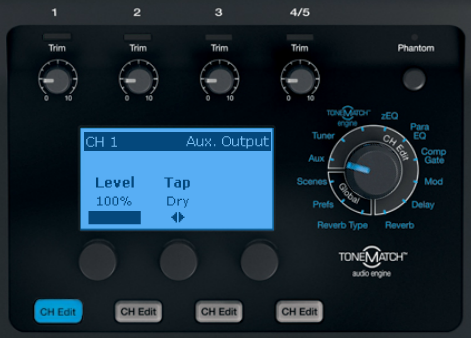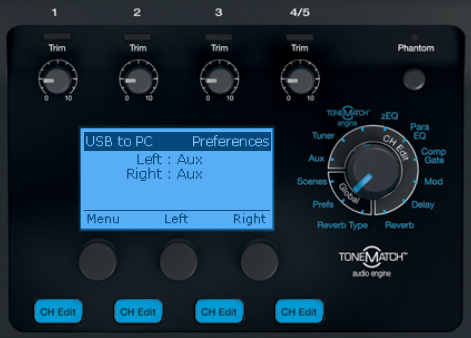Difference between revisions of "Recording USB Dry"
m |
m |
||
| Line 1: | Line 1: | ||
| − | Here is a quick look at how to send a DRY (without any effects) signal to the computer while retaining any settings you prefer to hear for monitoring or performance. | + | You can use your {{t1}} as a [[USB|the USB soundcard]] with your computer and record. Here is a quick look at how to send a DRY (without any effects) signal to the computer while retaining any settings you prefer to hear for monitoring or performance. |
To record direct from the {{t1}} to a computer through [[USB|the USB port]] without any effects you can use the {{T1 nl}} Aux. | To record direct from the {{t1}} to a computer through [[USB|the USB port]] without any effects you can use the {{T1 nl}} Aux. | ||
Latest revision as of 14:45, 7 February 2014
You can use your T1 ToneMatch Audio Engine as a the USB soundcard with your computer and record. Here is a quick look at how to send a DRY (without any effects) signal to the computer while retaining any settings you prefer to hear for monitoring or performance.
To record direct from the T1 ToneMatch Audio Engine to a computer through the USB port without any effects you can use the T1 ToneMatch® Audio Engine Aux.
Here is an example.
If your source (microphone or instrument) is connected to T1 Channel 1
- Channel 1 - Press CHEdit
- Turn the Rotary Selector to Aux
- Set Aux settings as shown here.
Set the USB to PC settings to send Aux
- Turn the Rotary Selector to Prefs
- Set the USB to PC settings as shown below
For more details on these settings see: USB

